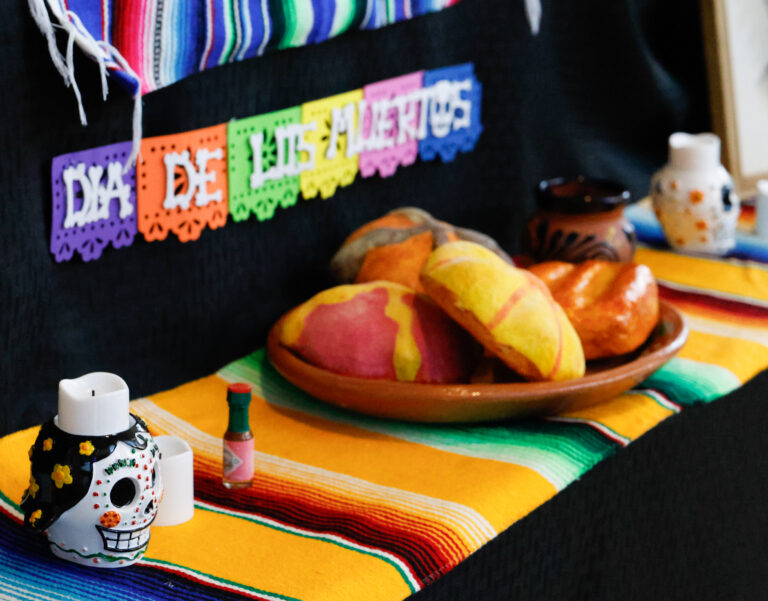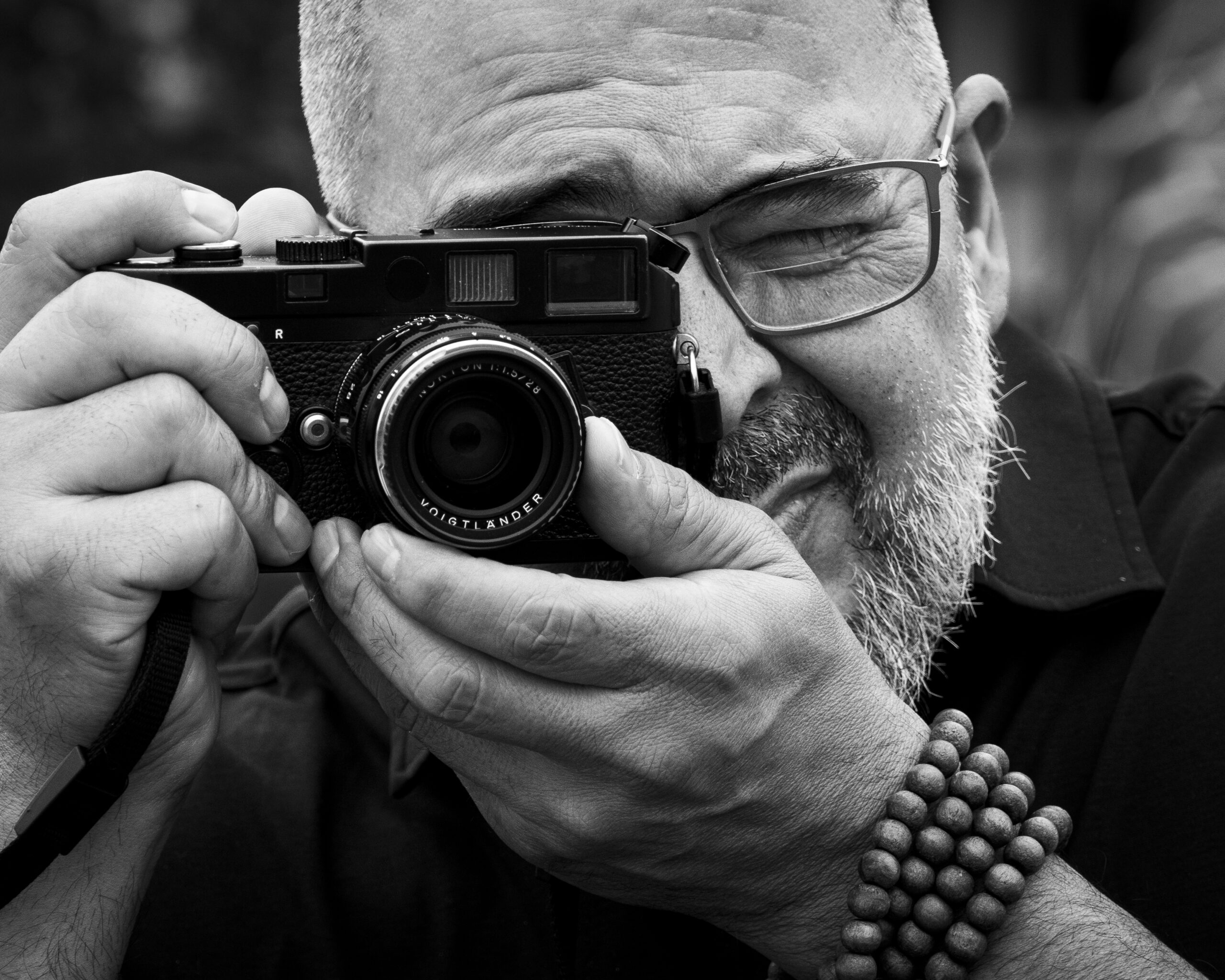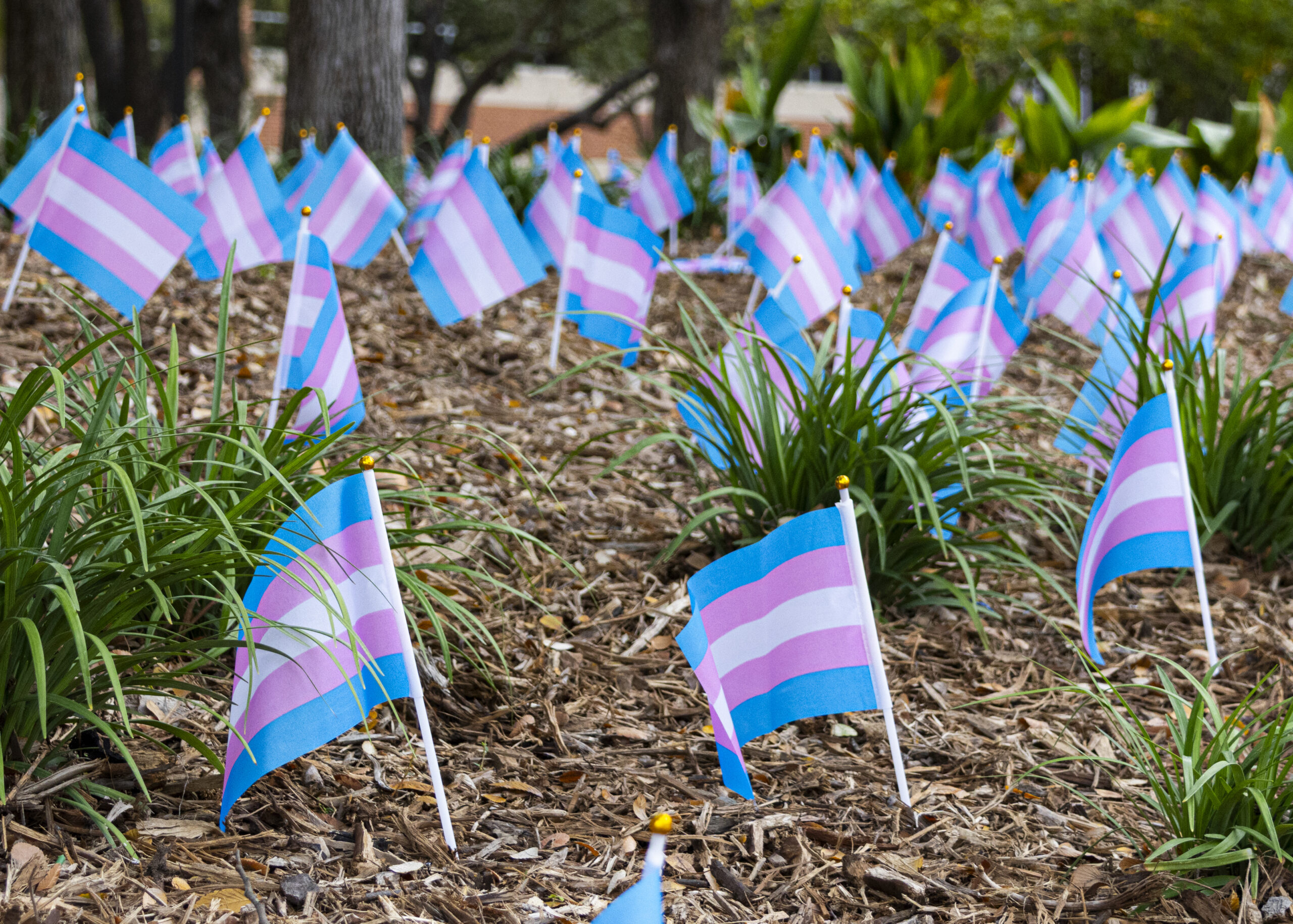The Mexican American Studies program hosted a Dia de los Muertos procession on campus Thursday, visiting ofrendas made by students and faculty.
The nine-stop tour started in the Scobee Education Center and included stops at the Loftin Student Center, Moody Learning Center, Eco Centro, the Nursing & Allied Health Complex, and the Science Annex building.
The ofrendas honored employees and loved ones who have passed.

“The holiday is not something I grew up with as a Tejano in San Antonio,” Assistant Professor of Humanities and Mexican-American Studies Roman Sanchez said. “I think over the last one or two centuries of industrialization, it was lost, but it’s been really great to reclaim the tradition and learn about it as an adult. It lined up with me personally at the time my grandparents passed away in my 20s, and I was having children. It’s been a central importance to me and my family during these troubling times to really hold on to who we are as a family.”
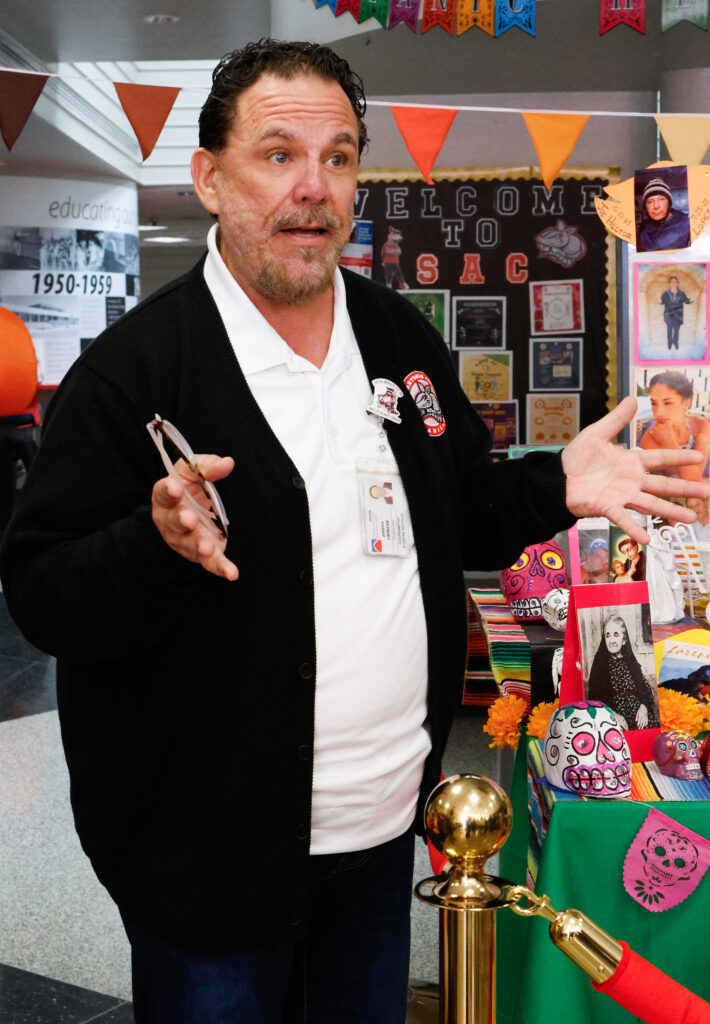
The Aztec people celebrated Dia de los Muertos to honor the Lady of the Dead, Mictēcacihuātl, who they believed had it as her duty to watch over the bones of the dead.
When the Spanish invaded Mexico, they infused Catholicism in the holiday to honor All Saints Day and All Souls Day.
Mexican-American History major and non-traditional student Frances Perez said she was not able to celebrate the holiday or embrace her culture growing up.
“I was born in 1971, so I was in school in the early 80s, and I was not allowed to speak Spanish, only English,” Perez said. “It was to the point where people from my school came to our home to educate us on speaking more English, so I could be a better student. It felt like they took something from me, my language and my culture.”

Perez said she is excited to pass down the tradition of making an ofrenda to her grandchildren so that they can know their culture.
The ofrenda plays a vital role in honoring loved ones by leaving them their favorite food and drinks. Marigolds are meant to be the guiding flower that leads the deceased back to the living. The flower is often torn apart and then made into a trail to the ofrenda so that loved ones can find their way to the living world.
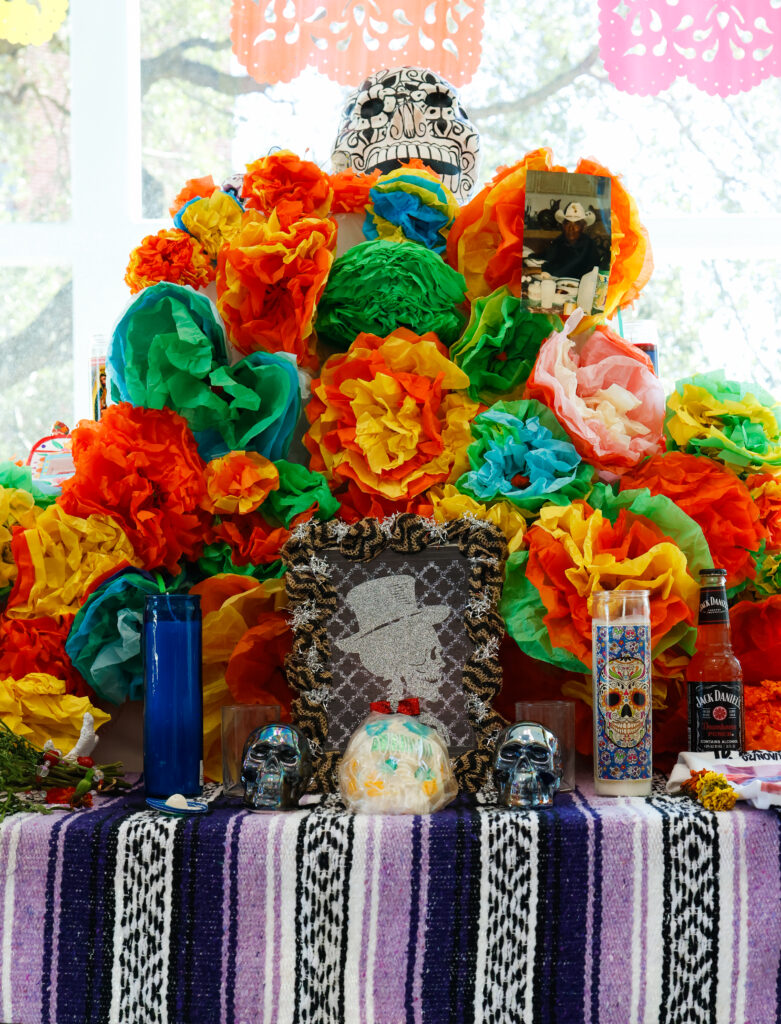
“All altars will typically have the four elements represented,” Mexican-American and History Professor Marianne Bueno said. “Wind is represented with the papel picado. Earth is usually represented through some sort of symbol of a harvest of a crop, so you’ll see bowls with dried beans or dried rice, or corn husks. The water is usually a cup of water, and then of course all of the candles represent fire.”
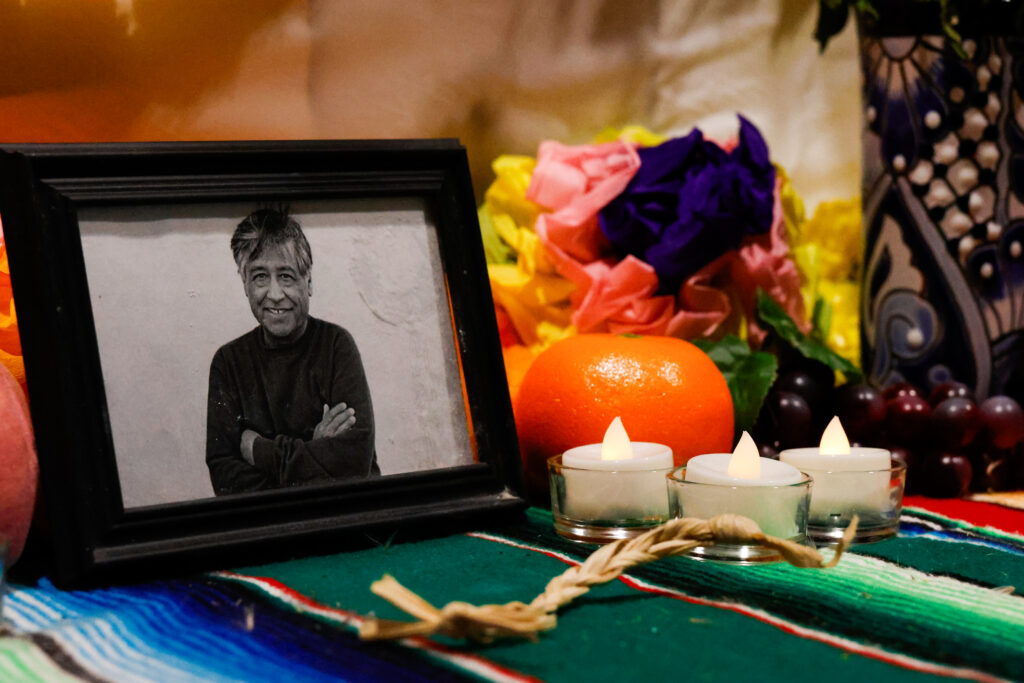
The ofrendas will be displayed until Nov. 21 in the Scobee Education Center, Loftin Student Center, Moody Learning Center, Eco Centro, the Nursing & Allied Health Complex, and the Science Annex building.
Read Next: Scobee Center Celebrates Anniversary with Halloween Bash

